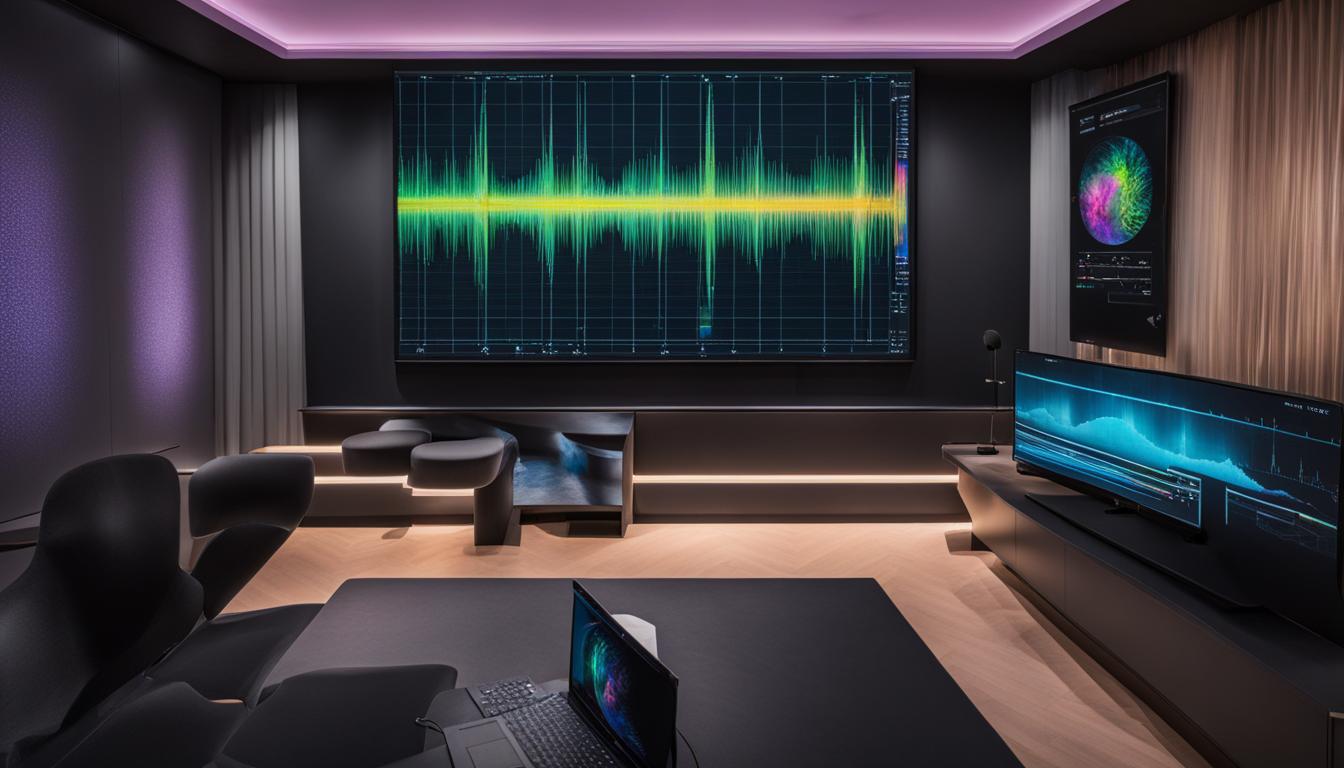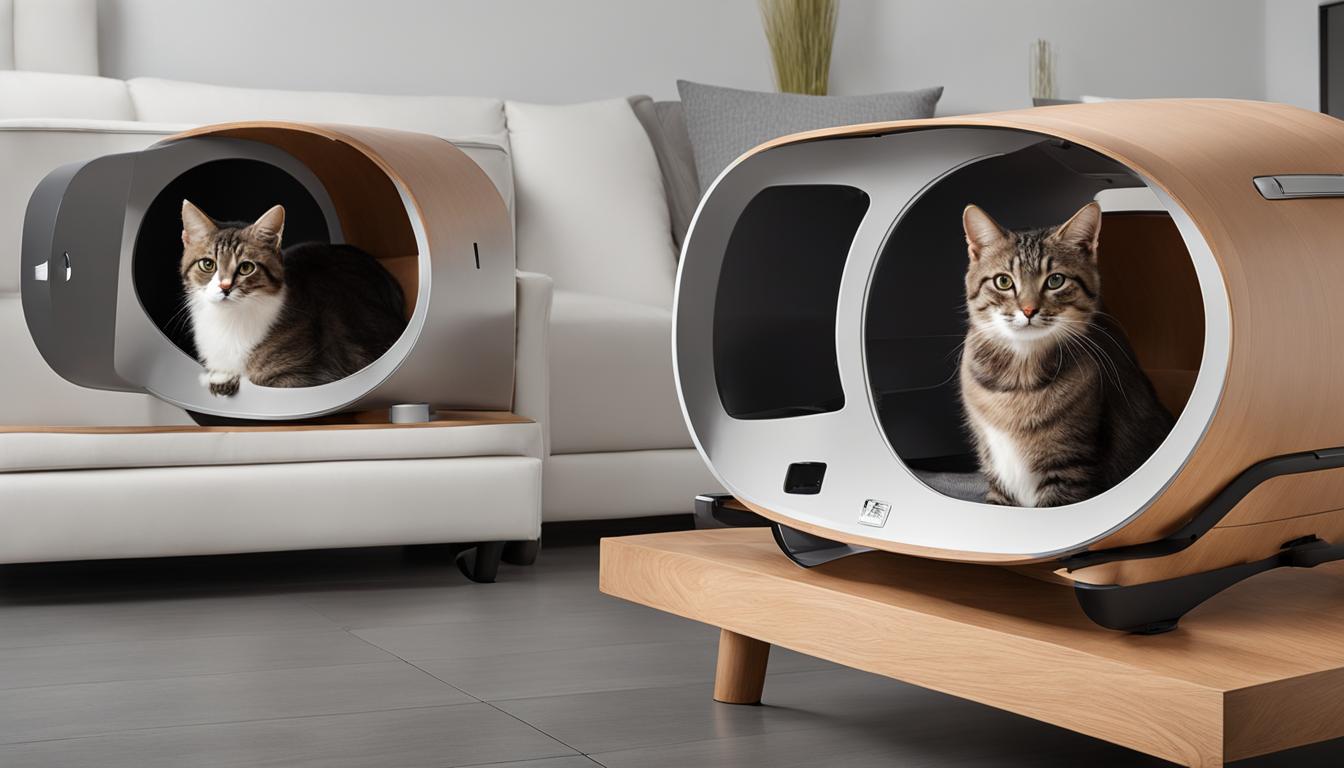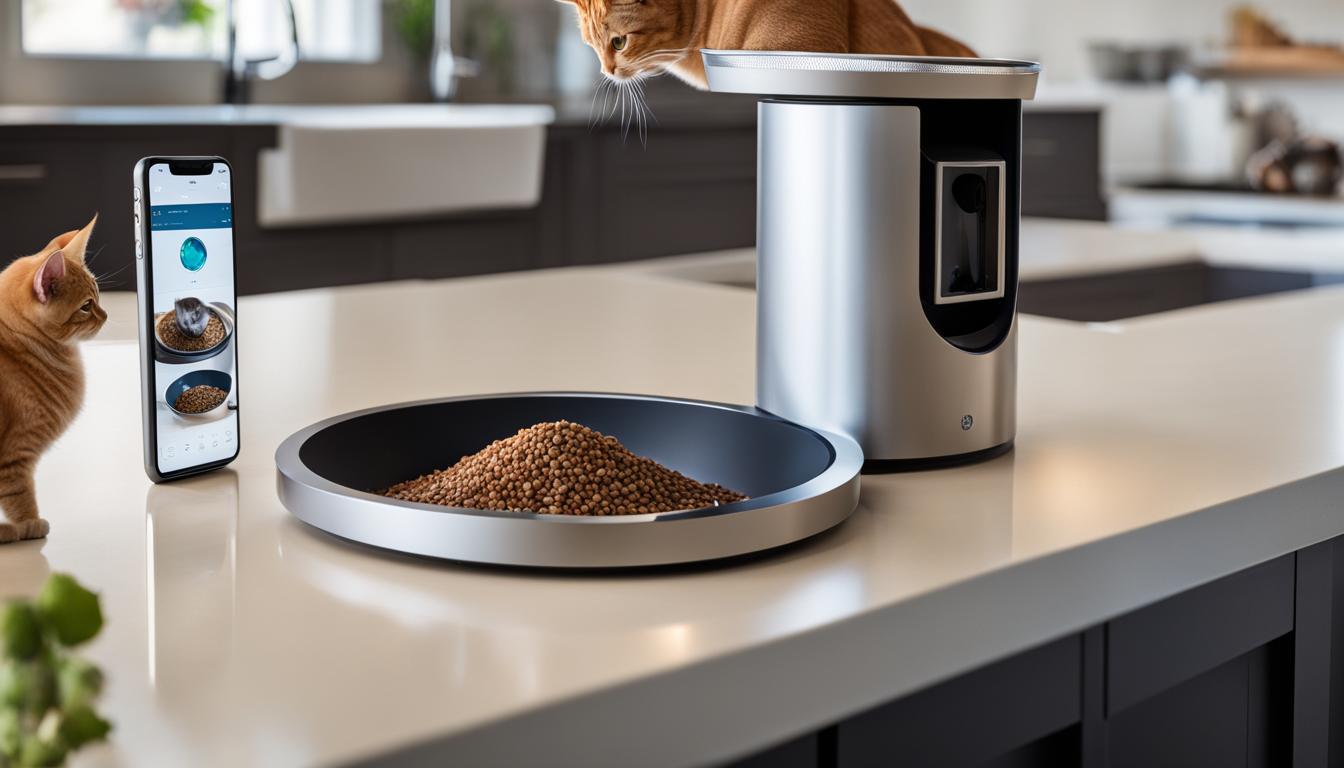Hey there, fellow cat lovers! Have you ever wondered what your feline friend is trying to say when they meow? Well, I’ve got some exciting news for you. Thanks to the wonders of artificial intelligence (AI), we can now analyze cat meows and gain a deeper understanding of our furry companions.
Introducing MeowTalk, an AI-powered cat translator app that is changing the way we interpret cat talk. With the help of science and AI, MeowTalk can decipher those mysterious meows and translate them into 11 general meow intents. It’s like having a conversation with your cat!
Using a massive dataset of over 260 million cat vocalizations, MeowTalk’s AI-powered model has been trained to recognize different sounds captured by your phone. It then interprets those sounds into human language, providing valuable insights into your cat’s needs and emotions.
Since its launch, MeowTalk has amassed over 20 million downloads worldwide and has been praised by cat owners for helping them better understand their furry companions. So, let’s dive deeper into how this amazing AI technology works and the potential it holds for unlocking the secrets of feline communication.
Key Takeaways:
- AI technology is revolutionizing the way we understand cat vocalizations.
- MeowTalk is an AI-powered app that translates cat meows into human language.
- The app has been trained on a vast dataset of over 260 million cat vocalizations.
- MeowTalk has been downloaded over 20 million times and has received positive feedback from users.
- Understanding cat vocalizations can strengthen the bond between cat owners and their furry friends.
How MeowTalk Works
MeowTalk utilizes advanced artificial intelligence (AI) technology to decipher and interpret cat vocalizations. The app collects and labels cat meows, which are then used to train the AI-powered model. This process allows MeowTalk to recognize various meow intents, such as hunger, happiness, or the need for attention. With over 280 million recorded meows and more than 8 million cat profiles created, MeowTalk continuously improves its technology through retraining the AI model based on its unique dataset.
Through machine learning algorithms, MeowTalk recognizes patterns in cat vocalizations, enhancing its ability to accurately interpret and understand feline communication. The app’s AI-powered model has been trained on a vast dataset of over 260 million cat vocalizations, ensuring a robust and reliable system. By analyzing the captured sounds, MeowTalk translates them into human language, providing cat owners with a deeper understanding of their furry companions’ needs and emotions.
MeowTalk’s AI interpretation of cat sounds opens up new possibilities for cat owners to communicate and bond with their pets. By relying on advanced machine learning and AI technology, MeowTalk is at the forefront of feline vocal recognition, revolutionizing the way humans and cats interact. With its accurate interpretation of cat meows, MeowTalk is bridging the communication gap and fostering stronger relationships between cats and their owners.
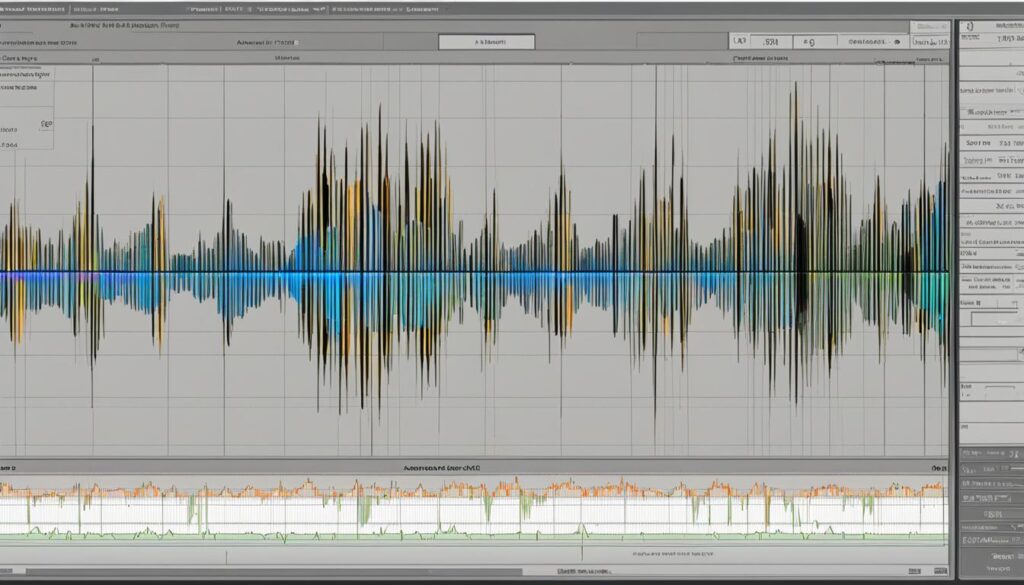
Table: Meow Intents Recognized by MeowTalk
| Meow Intent | Description |
|---|---|
| Hunger | Expressing the need for food or treats |
| Happiness | Displaying contentment and satisfaction |
| Attention | Seeking human interaction or playtime |
| Displeasure | Expressing dissatisfaction or annoyance |
| Curiosity | Demonstrating interest in the environment or objects |
| Stress | Signaling discomfort or anxiety |
The Potential of AI in Cat Language Research
I am fascinated by the potential of AI in cat language research. The ability to use artificial intelligence to analyze and understand feline vocalizations opens up a whole new world of communication with our furry friends. With AI-based feline communication tools like MeowTalk, cat owners can gain valuable insights into their cats’ needs and emotions, strengthening the bond between human and feline companions.
Machine learning plays a crucial role in understanding cats and their vocal patterns. AI systems can analyze vast amounts of data, recognizing patterns and correlations that may not be apparent to human observers. By training these AI models on extensive datasets of cat vocalizations, researchers can develop algorithms that can accurately interpret and translate meows into human language.
Understanding cat vocal patterns can provide valuable insights into their emotional states. For example, a high-pitched meow may indicate distress or pain, while a low-pitched rumble may signify contentment. AI technology can help decipher these vocalizations and enable cat owners to better understand and respond to their cats’ needs.
| AI-based Feline Communication Tools | Benefits |
|---|---|
| MeowTalk | Provides insights into cat needs and emotions |
| Cat Translator | Facilitates communication between cats and humans |
| Cat Vocalization Analyzer | Identifies patterns and correlations in cat vocalizations |
AI technology in cat language research has the potential to revolutionize the way we understand and communicate with our feline friends. By using machine learning algorithms to analyze cat vocal patterns and interpret their meows, we can develop a deeper understanding of their needs and emotions. This not only enhances the bond between cats and their owners but also allows us to provide better care and enrichment for our four-legged companions.
The Future of AI in Cat Language Research
The future of AI in cat language research looks promising. As technology continues to advance, we can expect further advancements in AI-powered feline communication tools. These tools will enable us to have more meaningful conversations with our cats, opening up new possibilities for understanding their unique language. With ongoing research and development in the field of AI, we are likely to uncover even more insights into the intricate world of feline vocalizations and behaviors.
AI technology is not limited to cats alone. Researchers are exploring the use of AI and machine learning in understanding communication in various animal species. By analyzing vocalizations and behaviors, AI systems can provide valuable insights into the complex world of animal communication. The ability to decode and interpret animal sounds through AI technology has the potential to revolutionize our understanding of the animal kingdom as a whole.
As we continue to unlock the secrets of feline vocalizations with AI, we are paving the way for a deeper connection with our cats and a greater appreciation for their unique language. AI-based feline communication tools are just the beginning of a new era in understanding and communicating with our furry companions.
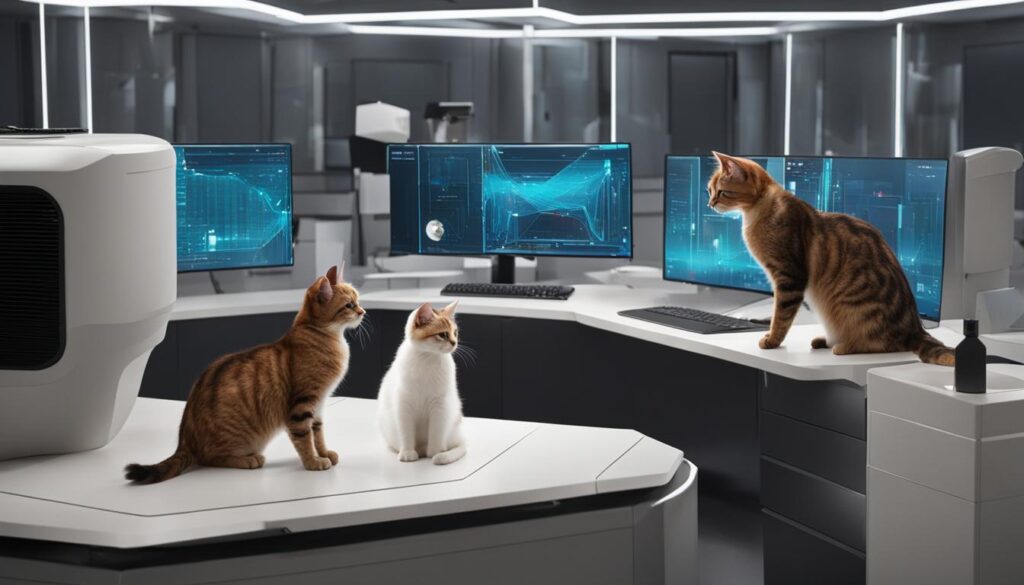
The Challenges and Limitations of Cat Translation Apps
Cat translation apps like MeowTalk offer a fascinating glimpse into the world of feline vocalizations, but they also come with their fair share of challenges and limitations. While these apps use advanced AI technology to interpret cat meows, accurately translating them into human language is no easy feat.
Speech recognition for cats is a complex task, as each meow can have multiple meanings and interpretations. Cats use a combination of vocalizations, body language, and context to communicate their needs and emotions, making it difficult to pinpoint the exact meaning behind each meow. As a result, cat translation apps rely on assumptions and generalizations to interpret meows, which can sometimes lead to inaccuracies or misinterpretations.
Another challenge with cat translation apps is the variation in accuracy between different apps and contexts. Since each app has its own AI model and dataset, the accuracy of translations can vary depending on the app used and the specific context in which the meow is analyzed. This means that while these apps can provide valuable insights into cat communication, they may not always provide completely accurate or definitive translations.
“Cat translation apps are a great starting point for understanding your cat’s vocalizations, but it’s important to remember that they are not perfect,” says Dr. Emily Stevens, a veterinarian specializing in feline behavior. “They can give you a general idea of what your cat is trying to communicate, but it’s always best to rely on your own observations and understanding of your cat’s unique behaviors and preferences.”
In summary, cat translation apps offer a unique and innovative way to interpret cat vocalizations, but they have their limitations. Understanding cat meows requires a deeper understanding of their individual behaviors and the context in which they are communicated. While these apps can provide helpful insights, it’s important to approach their translations with a degree of caution and rely on other cues such as body language and observation to fully understand your cat’s needs and emotions.
The Future of AI in Pet Communication
As AI technology continues to advance, the future of pet communication holds great promise. AI-powered tools and apps, like MeowTalk, are revolutionizing the way we understand and interact with our furry friends. By harnessing the power of AI in cat language research, we can bridge the communication gap between humans and pets, gaining a deeper understanding of their needs, emotions, and behaviors.
AI technology in cat language research enables us to analyze and interpret feline vocalizations, unlocking valuable insights into their communication patterns. This knowledge can help pet owners develop stronger bonds with their cats, enhancing the overall well-being and happiness of both parties. The potential for AI to revolutionize pet communication extends beyond cats, with researchers also exploring the development of AI-powered dog translators and other animal communication tools.
With AI as our ally, we can look forward to a future where we can have meaningful conversations with our pets. Imagine being able to understand not only their basic needs but also their desires, fears, and dreams. This deeper level of communication can lead to enhanced relationships, enriched lives, and a greater appreciation for the unique individuals that our furry companions are.
| AI in Pet Communication | Benefits |
|---|---|
| Improved Understanding | AI technology allows us to interpret pet vocalizations and behaviors, providing insights into their needs and emotions. |
| Enhanced Bonding | Deeper communication with pets can strengthen the bond between humans and animals, fostering trust and mutual understanding. |
| Enriched Lives | By understanding our pets on a deeper level, we can provide them with a more enriched and fulfilling life. |
As we continue to explore the possibilities of AI in pet communication, it is important to recognize that there are still challenges and limitations to overcome. Translating and interpreting animal sounds and behaviors is a complex task, and there is much work to be done to achieve greater accuracy and understanding. However, with ongoing advancements in AI technology and machine learning, we can expect to see exciting developments in the field of animal communication in the years to come.
The Wider Impact of AI in Animal Communication
The use of AI in animal communication is not limited to just cats and dogs; it extends to a wide range of species. Researchers are harnessing the power of AI and machine learning algorithms to decipher and understand communication in various creatures, including honeybees and prairie dogs. By analyzing vocalizations and behaviors, AI systems can provide valuable insights into the world of animal communication, shedding light on their intricate ways of interacting and conveying information.
One remarkable example is the study of honeybees, where AI technology has enabled researchers to analyze complex communication patterns within the hive. By decoding the vibrational signals produced by bees, AI algorithms can identify specific messages related to foraging, queen presence, and even threats to the colony. This newfound understanding of honeybee communication can have profound implications for agriculture, allowing farmers to better manage and protect these essential pollinators.
In the realm of prairie dogs, AI has proven to be a game-changer in unraveling their intricate language. These social creatures use a complex system of vocalizations called “barks” to communicate various messages, including identifying predators and coordinating group behavior. AI algorithms can analyze and classify these barks, revealing the unique meanings behind each vocalization. This research not only enhances our understanding of prairie dog society but also provides insights into animal cognition and the evolution of language.
AI communication tools are unlocking the ability to have micro-conversations with animals, offering a glimpse into their rich and nuanced worlds. By bridging the gap between humans and animals, AI technology opens up new possibilities for understanding, conserving, and collaborating with the animal kingdom.
As the field of AI in animal communication continues to advance, we can expect further discoveries and applications in understanding the complexities of inter-species communication. From deciphering the intricate language of dolphins to unraveling the mysteries of bird song, AI has the potential to revolutionize our relationship with the animal world. By leveraging the power of AI and machine learning, we can unlock the secrets of animal communication and forge a deeper connection with the diverse creatures that share our planet.

Conclusion
After exploring the fascinating world of AI in cat vocalization analysis, it is clear that we are on the brink of a feline communication revolution. Apps like MeowTalk, powered by artificial intelligence and machine learning, offer cat owners a unique opportunity to understand their furry companions on a whole new level. By interpreting cat sounds into human language, these apps provide valuable insights into their needs and emotions, fostering stronger bonds and healthier relationships.
However, it is important to acknowledge the challenges and limitations that come with translating animal sounds through AI. The precise meaning behind each meow is subjective and open to interpretation, making it difficult to achieve absolute accuracy. But with continued advancements in AI technology and the dedication of researchers, we can expect to see improvements in the future.
The impact of AI in pet communication goes beyond just cats. Researchers are exploring the use of AI and machine learning algorithms to unlock the secrets of communication in various species. From honeybees to prairie dogs, analyzing vocalizations and behaviors with AI systems allows us to gain valuable insights into the animal kingdom.
As we move forward, the potential for AI to revolutionize animal communication is limitless. With further developments in AI technology and machine learning, we can expect a deeper understanding of the vocal patterns and behaviors of our furry friends. So, let’s embrace this exciting journey as we decode the language of the animal kingdom with AI.
FAQ
How does MeowTalk work?
MeowTalk uses AI technology to analyze cat vocalizations. It collects and labels cat meows to train its AI model, which can interpret cat meows into 11 general meow intents.
What are the general meow intents that MeowTalk can interpret?
MeowTalk can interpret cat meows into 11 general intents, including hunger, happiness, and the need for attention.
How accurate are the translations from MeowTalk?
The accuracy of translations can vary depending on the app and the specific context. Translating cat meows into human language is based on assumptions and interpretations.
Can MeowTalk work for all cats?
MeowTalk is designed to work for a wide range of cats. However, the accuracy of translations may vary depending on the individual cat’s vocal patterns and behaviors.
How does MeowTalk continuously improve its technology?
MeowTalk continuously improves its technology by retraining its AI model based on the unique dataset it has collected. The app has recorded over 280 million meows and has created over 8 million cat profiles.
What other pet communication tools are being developed using AI?
Researchers are also exploring the development of AI-powered dog translators and other animal communication tools.
Can AI be used to understand communication in other animal species?
Yes, researchers are using AI and machine learning algorithms to decipher and understand communication in various species, including honeybees and prairie dogs.
How can AI help bridge the communication gap between humans and pets?
AI-powered tools and apps, like MeowTalk, allow for a deeper understanding of pets’ needs and emotions, leading to stronger bonds and healthier relationships.
What is the potential of AI in animal communication?
AI technology has the potential to revolutionize our understanding of animal communication by providing valuable insights into vocal patterns and behaviors.

